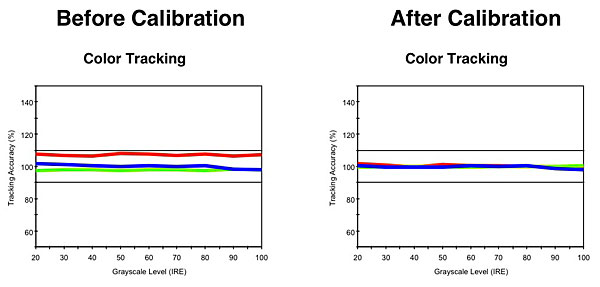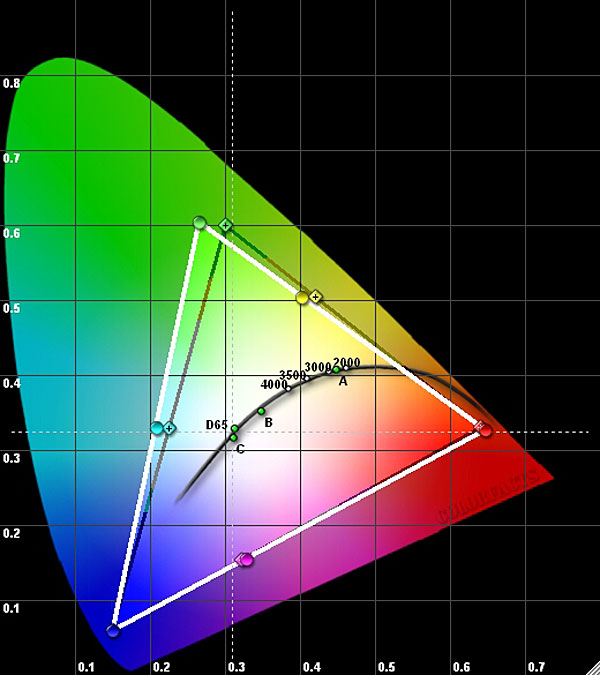Samsung PN59D8000 3D Plasma HDTV HT Labs Measures
Full-On/Full-Off Contrast Ratio: 3,262:1
The full-on/full-off contrast ratio was calculated at a measured peak white level of 29.36 foot-lamberts and a full black reading of 0.009 ft-L. There were occasions in which the full-screen black dropped to a full-off, unmeasurable value. But unlike an LCD set with full-array LED backlighting and local dimming, this total black level didn’t hold once even a small portion of the screen was illuminated. The black level would then increase to 0.009 ft-L, which I judged to be the lowest useful level for the 2D movie mode.
In 2D, the zero setting of the gamma control produced measured gammas ranging from 2.08 to 2.21. In 3D, a +1 setting produced gammas between 1.48 and 1.66. While the latter is far lower than the typically recommended gamma (about 2.2), it produced a somewhat brighter 3D picture without obviously washing out most images (lower gammas produce a brighter image, particularly in the mid-brightness region). The –3 setting of the gamma control in 3D produced a gamma of 1.76 to 2.01, but this looked far too dark.

The Color Tracking charts show how well a display adheres to the D65 standard white point; the tighter the overlap of the three primary colors, the nearer the result is to D65. The 2D charts shown here were taken in the warm2 color tone setting. I didn’t need to use the 10-point feature to obtain the After Calibration result; I only used the two-point settings. (Previous experience with Samsung’s 10p controls showed them to be very effective, but the control that affects a given IRE level was often one step removed from the intuitive one—that is, Interval 5 would work best for adjusting 60 IRE, 6 for 70 IRE, etc.)
The final 2D Delta E was under 1.97 for all brightness levels. 3D required more work, but after calibration, its Delta E was under 2.04 from 20 IRE at the dark end to 90 IRE, increasing to 3.5 only at 100-IRE peak white. Delta E shows how close the result is to the standard D65 white point. Most experts recommend a Delta E value of 4 or less, although some recommend a Delta E of no more than 3 for a visibly ideal result.

The 2D CIE chart shown is for the calibrated custom setting of the color space control. The measured 2D result, the white triangle, closely overlaps the Rec. 709 standard, shown by the largely invisible black triangle. For 3D, I used the auto setting of the color space control; as noted elsewhere, the custom mode cannot be set separately for 2D and 3D. The final 3D color gamut (not shown), while not as impressive as the 2D result, was nevertheless satisfactory.—TJN









































